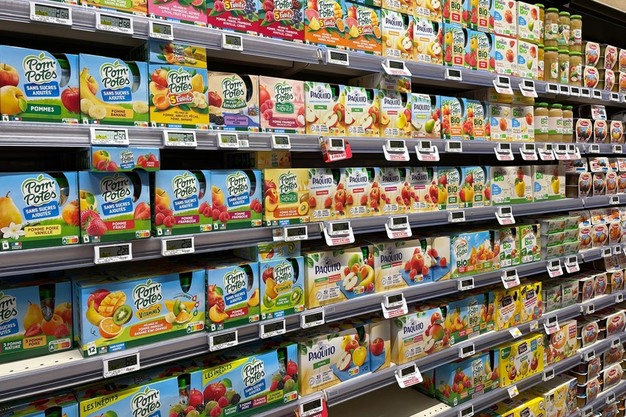"Underestimated" for a long time, processed apples have now made a name for themselves with French consumers. In this fast-growing market, the apple sector now intends to focus on this segment too, as demonstrated by the creation of the Processing Commission within the French Apple Pear Association (ANPP) a year ago. This committee is chaired by Eric Sarazin, who discussed the prospects for this "new" market at the launch of the apple-pear campaign, along with the outlook for 2025-2026 in the light of the orange concentrate crisis and the drop in processing volumes at the European level.
 © FreshPlaza
© FreshPlaza
Processed apples: A growing market in terms of volume and value
"We probably underestimated the importance of processed apples," explains Eric Sarazin. The French market for apples intended for processing now represents almost 320,000 tons. The majority come from dual-purpose orchards, as well as dedicated orchards and imports (fresh apples, purees, or juice). In terms of outlets, compotes account for 240,000 tons, followed by cuts (for pastries) at around 50,000 tons, and juice with 376,000 tons. In total, the French consume almost as many processed apples as fresh apples. The fresh market is estimated at 820,000 tons, a level close to the gross volume absorbed by the processing sector.
"There is no doubt that the processing sector is now generating value," explains Éric Sarazin. Kantar data confirms this. Since 2021, average household spending on processed apple products (compote, juice, baby food) has exceeded purchases of fresh apples. "The amount spent per household was €39/year [46 USD/year] on compotes alone in 2024, compared with €33/year [39 USD/year] on fresh products. This is a strong indicator that processing has become very important in terms of outlets."
What is the outlook for 2025/2026?
At the European level, the forecasts* indicate a reduction in supplies this year, mainly due to the influence of Poland. Among the main countries supplying apples for processing, the general trend is downwards. Poland, in first place, has seen its processing supply drop, as have Germany, Italy, and Spain.
*Estimates for the 2025-2026 season were drawn up by the various European producing countries based on historical statistics at the end of July. It is therefore impossible at this date to know the percentage of apples for processing in the orchards.
An opportunity for French apples? "The orange juice concentrate crisis has maintained high prices, and despite global orange production regaining momentum, it will take time for the market to rebalance. We will not see any price increase for concentrates, but prices should remain steady, especially as certain players, such as Turkey and Poland, will find it difficult to supply the market. This is one of the first factors that will shape the processing market this year," explains Eric Sarazin. With French supply available but not in excess, there is no doubt that value can be added, but this cannot be done without a solid base. "Processing is not a way out; it is a source of value for the orchard that can no longer be ignored. But it must be valued and secured by developing multi-year contracts." For compotes, for example, the majority of volumes are sold on the open market (37% under contract).
Compotes are still number 1
In terms of the breakdown of volumes for processing by outlet (in 2024-2025), the overwhelming majority of volumes are destined for compotes, at 87% (11% for juice and 2% for peeled apples and the baby food range), with 94% going to the conventional market. In terms of the market, 98% is sold on the French market, with exports accounting for 2% only. Most of the compote volumes come from bicolored apples (67%), followed by Golden and similar varieties (29%), while tart apples are still in the minority (4%).
Peeled apples and baby food: The best-valued segments
While compotes lead the way in terms of volume, it is the Peeled Apple/Babyfood segment that is the best valued, with an average price of €488 [573 USD] per ton (although the trend is unstable due to irregular demand). Compotes average €377 [443 USD] per ton (although the trend is tighter and more contained), while juices are the least valued products, averaging €342 [402 USD] per ton.
For more information:
ANPP
https://lapomme.org
